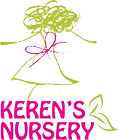Parents are constantly seeking ways to nurture their children’s growth and development. From providing them with a safe environment to offering educational toys, we strive to give them the best possible start in life. One often overlooked aspect of a child’s development is the role that colours play. Colours are not only visually appealing but also play a significant role in shaping a child’s cognitive development.
How Do Colours Provide Early Sensory Stimulation?
From the moment they are born, babies are drawn to bright and contrasting colours. This attraction to colours is not just coincidental; it’s a part of their early sensory development. Research has shown that newborns are more responsive to high-contrast colours like black and white, as their vision is still developing. These bold colour differences help stimulate the visual pathways in their brain, setting the foundation for future visual processing skills.
As your child grows, introducing a variety of colours continues to stimulate their senses. Colourful toys, books, and even everyday objects like fruits and flowers all contribute to their sensory experience. This exposure enhances their ability to differentiate between colours and recognize patterns, fostering essential cognitive skills.
How Do Colours Support Language Development in Children?
Colours also play a role in language development. As children begin to associate words with objects, colours provide an additional layer of understanding. When you describe objects using colour words, you’re helping them expand their vocabulary and develop a more nuanced understanding of the world around them.
As a parent, you can incorporate colour words into your daily interactions. For instance, during a walk in the park, you can point out the “green trees,” “blue sky,” and “yellow flowers.” This not only helps them learn colours but also enriches their language skills and cognitive flexibility.
How Do Colours Help Children Develop Cognitive Skills?
The influence of colours on cognitive development goes beyond sensory stimulation and language. Colours have been found to impact various cognitive functions, including memory, problem-solving, and creativity.
Memory
Colours have the power to enhance memory recall. Have you ever noticed how children tend to remember information associated with vibrant colours more easily? This phenomenon is known as the “von Restorff effect.” When an item stands out due to its colour, it becomes more memorable. Utilising colours while teaching or presenting information can help children retain and recall information more effectively.
Problem-Solving
Encouraging children to engage in colour-related activities can boost their problem-solving skills. Sorting objects by colour, completing colour-based puzzles, and participating in art projects that involve mixing and matching colours all contribute to the development of critical thinking and analytical abilities.
Creativity
Colours are closely tied to self-expression and creativity. Providing children with opportunities to explore colours through art and imaginative play allows them to express their emotions and ideas in unique ways. Colouring, painting, and crafting activities stimulate their imagination and help them develop their own sense of creativity.
How Do Colours Support Emotional Development in Children?
Colours have a profound impact on emotions and mood, making them an important aspect of emotional development. Different colours can evoke various feelings and sensations. For instance, warm colours like red and orange are often associated with energy and excitement, while cooler colours like blue and green evoke calmness and tranquillity.
Helping children recognise and understand these emotional associations can be beneficial. It enables them to express their emotions more effectively and understand the feelings of others. You can engage in conversations about how different colours make them feel and why certain colours might be chosen for specific situations, such as using blue for a peaceful bedtime routine.
Cultural and Symbolic Significance
Colours hold cultural and symbolic meanings that can contribute to a child’s cognitive development. Exploring the significance of colours in different cultures fosters an understanding of diversity and expands a child’s worldview. Additionally, understanding symbols and cultural meanings associated with colours helps develop their ability to interpret and analyse information in a broader context.
How To Incorporate Colour Into a Child’s Life
Create a colourful and stimulating environment for your child. Decorate their room with a variety of colours, and choose toys and books that incorporate different shades.
Daily Conversations
Engage in conversations about colours during daily activities. Whether you’re cooking, shopping, or playing outdoors, discuss the colours you encounter.
Artistic Expression
Encourage your child’s artistic expression by providing them with colouring books, art supplies, and craft activities. Allow them to experiment with mixing colours and creating their own masterpieces.
Colour Learning Games
Introduce colour-learning games that are both fun and educational. Matching games, sorting activities, and scavenger hunts focused on colours can enhance their cognitive skills.
Emotional Awareness
Talk to your child about how colours can represent different emotions. Ask them how a particular colour makes them feel and share your own experiences as well.
Cultural Exploration
Explore the cultural significance of colours together. Learn about how different cultures view and use colours in various contexts.









